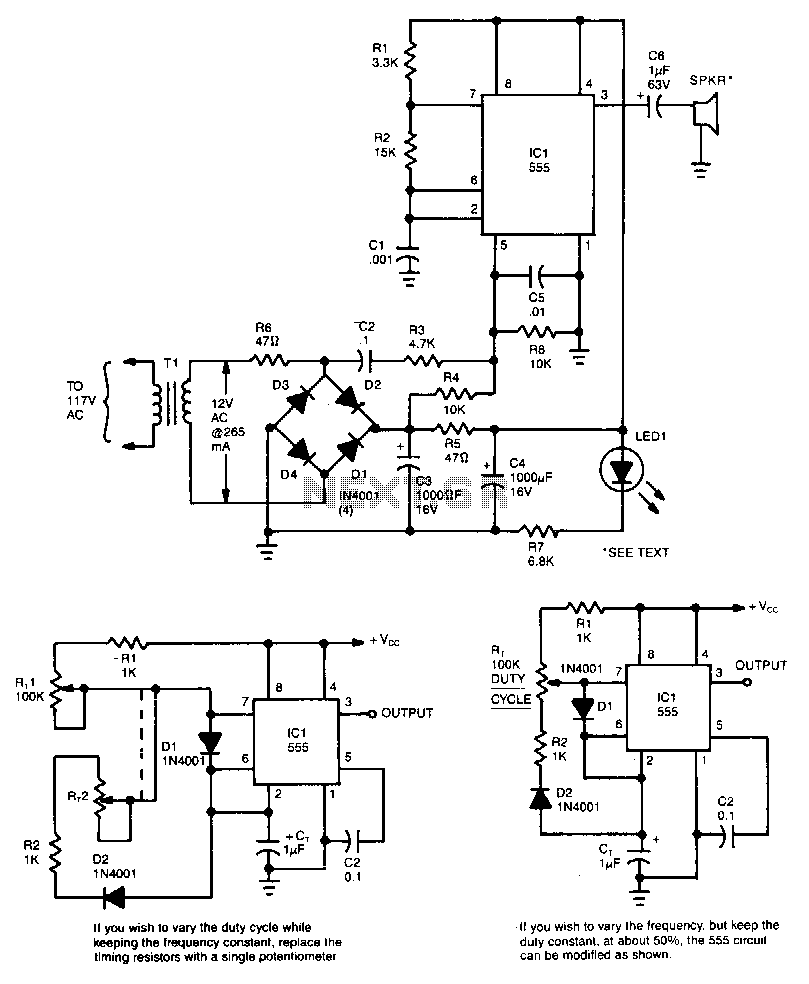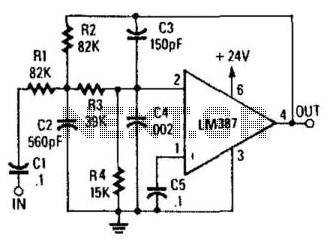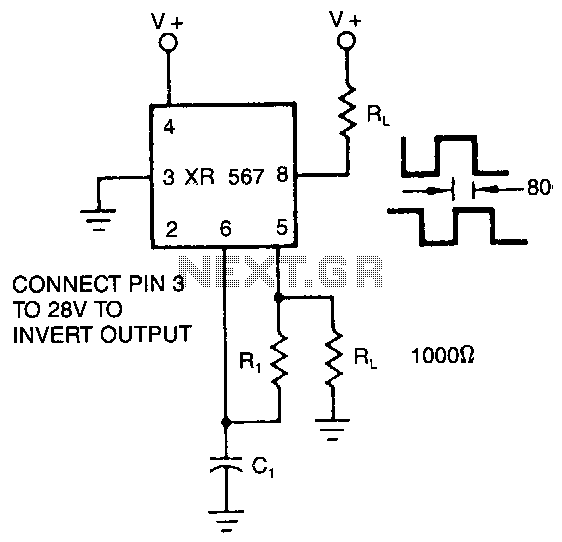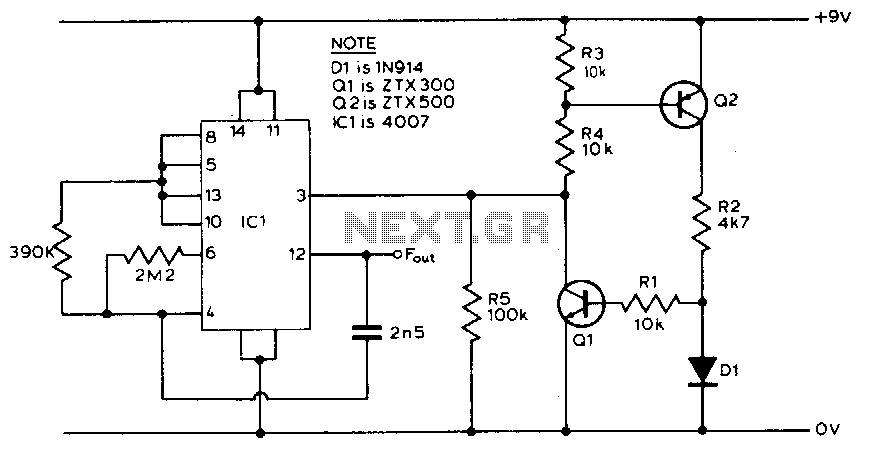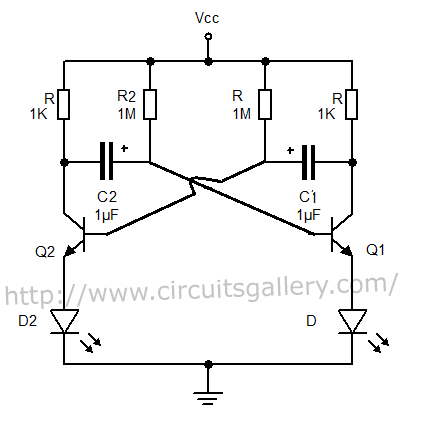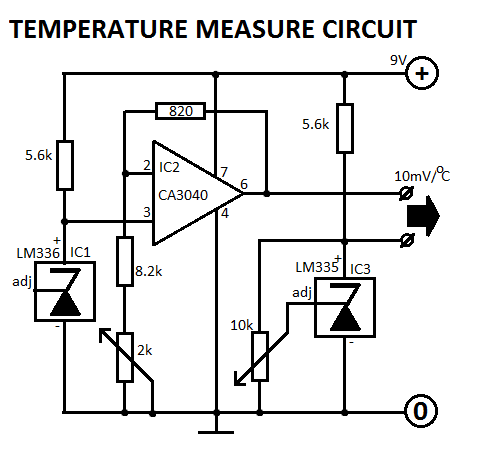
ultrasonic rat repellent
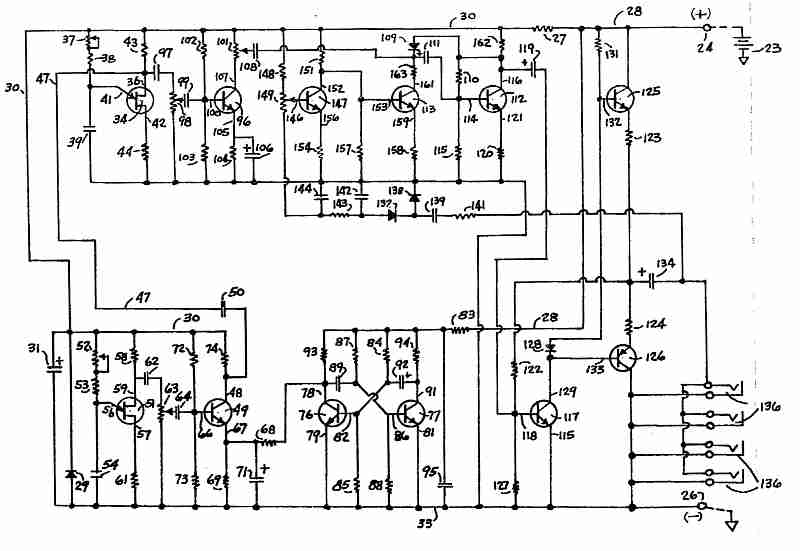
Ultrasonic rat repellent circuit and notes on ultrasonic experiments on rats.
The ultrasonic rat repellent circuit is designed to emit high-frequency sound waves that are above the range of human hearing but can be detected by rodents. These sound waves are intended to create an uncomfortable environment for rats, thereby driving them away from the area where the circuit is deployed.
The circuit typically consists of the following key components:
1. **Ultrasonic Transducer**: This component converts electrical signals into ultrasonic sound waves. It operates at frequencies usually between 20 kHz and 65 kHz, which are effective in repelling rodents.
2. **Oscillator Circuit**: An oscillator is used to generate the high-frequency signal that drives the transducer. This can be implemented using a 555 timer IC configured in astable mode or a microcontroller that can output PWM signals at the desired frequency.
3. **Power Supply**: The circuit requires a suitable power supply, which can be a battery or an AC adapter, depending on the design. The power supply should be capable of providing sufficient current to the transducer for effective operation.
4. **Amplifier (optional)**: In some designs, an amplifier may be included to boost the output signal from the oscillator before it reaches the transducer, ensuring that the ultrasonic waves are emitted at a higher intensity.
5. **Control Circuit**: Some advanced circuits may include a control mechanism that allows for adjusting the frequency or duration of the ultrasonic sound waves. This can enhance the effectiveness of the repellent by varying the output to prevent rodents from becoming accustomed to a constant frequency.
The circuit layout should be designed to minimize interference and optimize the performance of the ultrasonic transducer. Proper placement of the transducer is crucial; it should be positioned in an area where rats are likely to pass through while ensuring that the sound waves can propagate effectively without significant obstructions.
In addition to the circuit design, notes on ultrasonic experiments with rats may include observations on the effectiveness of different frequencies, the duration of exposure, and the behavioral responses of rodents to the ultrasonic sounds. These experiments can provide valuable insights into optimizing the circuit for maximum repellent efficacy.Ultrasonic Rat Repellent circuit and Notes on ultrasonic experiments on rats.. 🔗 External reference
The ultrasonic rat repellent circuit is designed to emit high-frequency sound waves that are above the range of human hearing but can be detected by rodents. These sound waves are intended to create an uncomfortable environment for rats, thereby driving them away from the area where the circuit is deployed.
The circuit typically consists of the following key components:
1. **Ultrasonic Transducer**: This component converts electrical signals into ultrasonic sound waves. It operates at frequencies usually between 20 kHz and 65 kHz, which are effective in repelling rodents.
2. **Oscillator Circuit**: An oscillator is used to generate the high-frequency signal that drives the transducer. This can be implemented using a 555 timer IC configured in astable mode or a microcontroller that can output PWM signals at the desired frequency.
3. **Power Supply**: The circuit requires a suitable power supply, which can be a battery or an AC adapter, depending on the design. The power supply should be capable of providing sufficient current to the transducer for effective operation.
4. **Amplifier (optional)**: In some designs, an amplifier may be included to boost the output signal from the oscillator before it reaches the transducer, ensuring that the ultrasonic waves are emitted at a higher intensity.
5. **Control Circuit**: Some advanced circuits may include a control mechanism that allows for adjusting the frequency or duration of the ultrasonic sound waves. This can enhance the effectiveness of the repellent by varying the output to prevent rodents from becoming accustomed to a constant frequency.
The circuit layout should be designed to minimize interference and optimize the performance of the ultrasonic transducer. Proper placement of the transducer is crucial; it should be positioned in an area where rats are likely to pass through while ensuring that the sound waves can propagate effectively without significant obstructions.
In addition to the circuit design, notes on ultrasonic experiments with rats may include observations on the effectiveness of different frequencies, the duration of exposure, and the behavioral responses of rodents to the ultrasonic sounds. These experiments can provide valuable insights into optimizing the circuit for maximum repellent efficacy.Ultrasonic Rat Repellent circuit and Notes on ultrasonic experiments on rats.. 🔗 External reference
